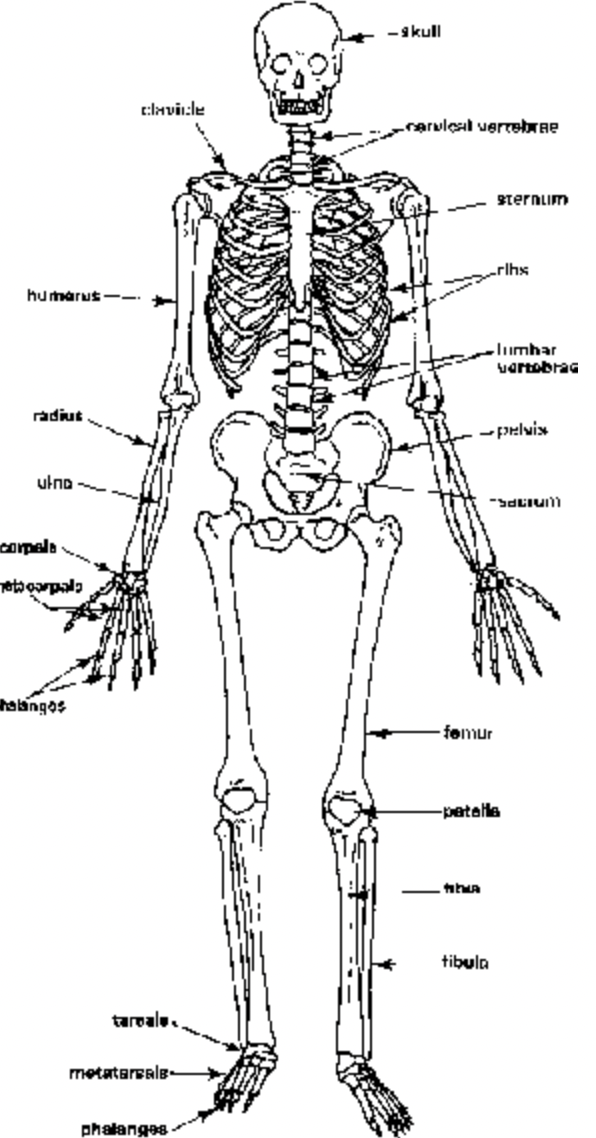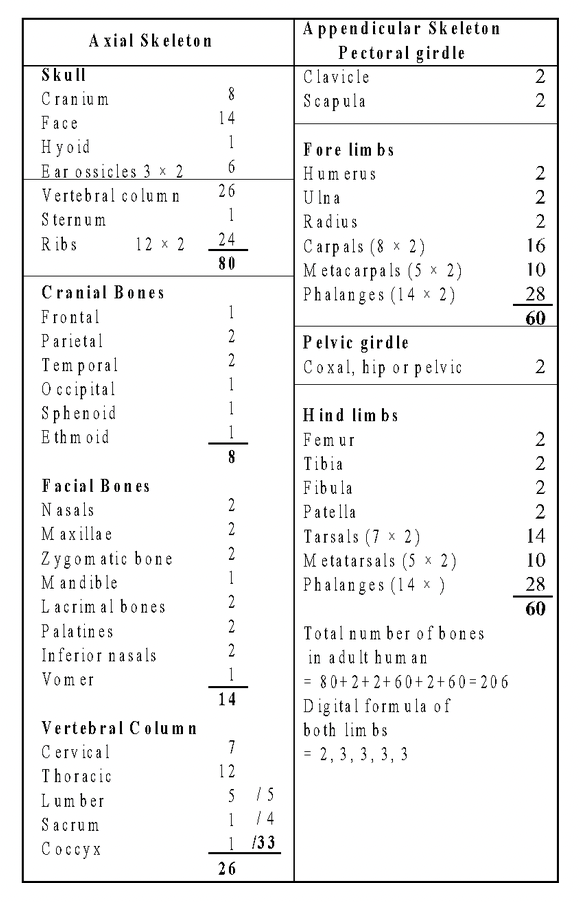Types of Skeletal System
Movement and Locomotion of Class 11
Types
Skeletal system is of two types, exoskeleton and endoskeleton.
Exoskeleton
It is rigid protective and supporting covering framework present outside the body. Exoskeleton is made up of hard structures or dead tissues. It is present both in invertebrates as well as vertebrates.
- Invertebrates. In invertebrates, exoskeleton is composed of pellicle, lorica, theca, cuticle, shell, corals and sclerites.
- Vertebrates. In vertebrates, exoskeleton consists of scales, feathers, hair, claws, nails, hoofs and horns. Regarding their origin, they are of two types—epidermal and mesodermal.
- (i) Epidermal or Ectodermal Exoskeleton. The exoskeleton develops from ectoderm or epidermis, e.g., mammals, birds, snakes and many lizards.
- (ii) Mesodermal or Dermal Exoskeleton. The exoskeleton develops from mesoderm, e.g., pisces (scales) and few reptiles like crocodiles, turtles and tortoises.
Endoskeleton
It is the hard supporting structural framework which occurs inside the body of an organism. It is present in invertebrates as well as vertebrates.
- Invertebrates. Some invertebrates have hard endoskeleton e.g. spicules (Porifera), internal shell (Cuttlefish).
- Vertebrates. In case of vertebrates, it is mainly composed of bones and cartilage.
Bone is the hardest connective tissue which has a solid matrix made of mineral matter (Ca2+, Mg2+, Cl–) and organic matter containing protein ossein. Matrix has a large number of irregular spaces or lacunae in which bone cells or osteocytes reside.
Cartilage is firm but flexible skeletal connective tissue which has a matrix made of mucoprotein chondrin. It also possesses regular spaces or lacunae in which cartilage cells or chondrocytes occur. In human
skeleton cartilage occurs in ear, nose, larynx, conducting region of respiratory tract, ends of many bones. Rest of the skeleton is made of bones. In chondrichthyes the entire skeleton is formed of cartilage.


Fig. Human Skeleton (ventral view)
Differences between Exoskeleton and Endoskeleton
| S.No. | Exoskeleton | Endoskeleton |
| 1. | It occurs outside the body. | It is present inside the body. |
| 2. | It generally originates from ectoderm. | It originates from mesoderm. |
| 3. | It may restrict the growth of the animal, as in case of arthropoda by cuticle. | It does not restrict the growth. |
| 4. | It is formed of either dead structures or biochemical secretions. | It is formed of hardened living tissue. |
| 5. | Exoskeleton is protective framework of the covers body. | It does not provide protection to whole body but some vital organs. |
| 6. | It takes part in offence and defence. | There is little role in offence and defence. |
| 7. | It may undergo moulting during the growing except in the period, that is, Egg Larva Pupa. | It never undergoes moulting or shedding, cases of diseases or disorder. |
| 8. | Muscles are attached to the inner surface of endoskeleton. | Muscles are attached to the outer surface of exoskeleton. |
- Introduction
- Skeletal System
- Types of Skeletal System
- Skeletal System in Man
- Appendicular Skeleton
- Limb Bones
- Type of Bones
- Joints
- Levers
- Disorder of Skeletal System
- Muscles
- Structure of Skeletal Muscle
- Physiological Aspects of Muscle
- Biochemical Aspects
- Types of Muscle Fibres
- Exercise 1
- Exercise 2
- Exercise 3
- Exercise 4
- Exercise 5









